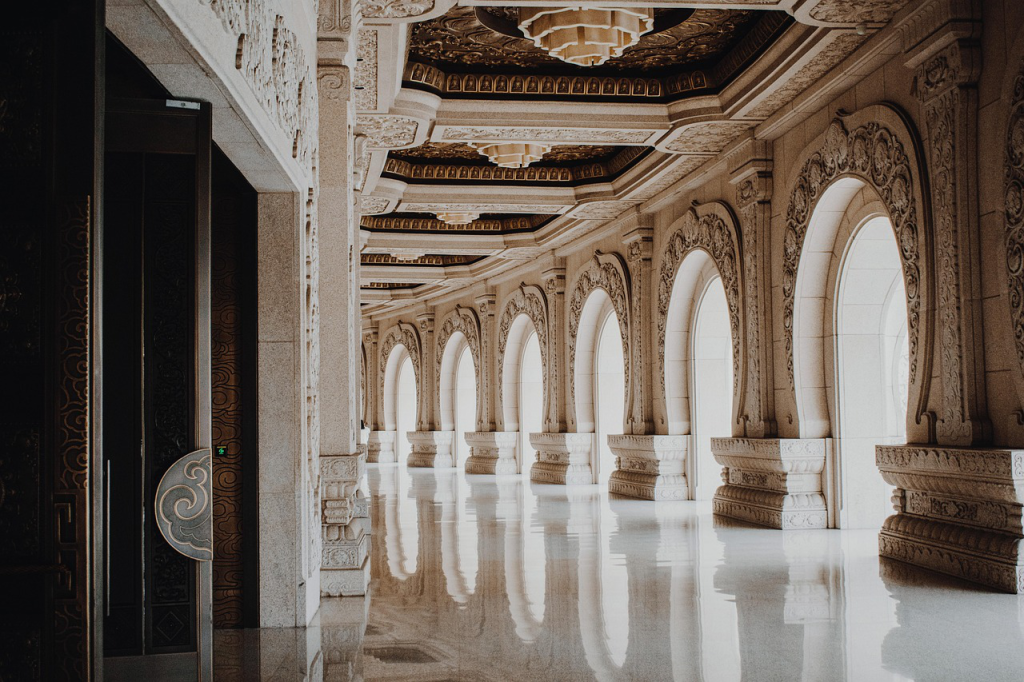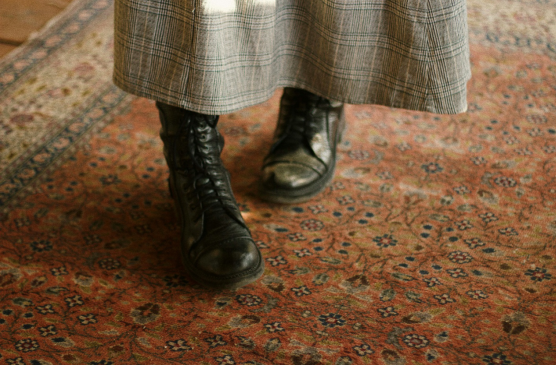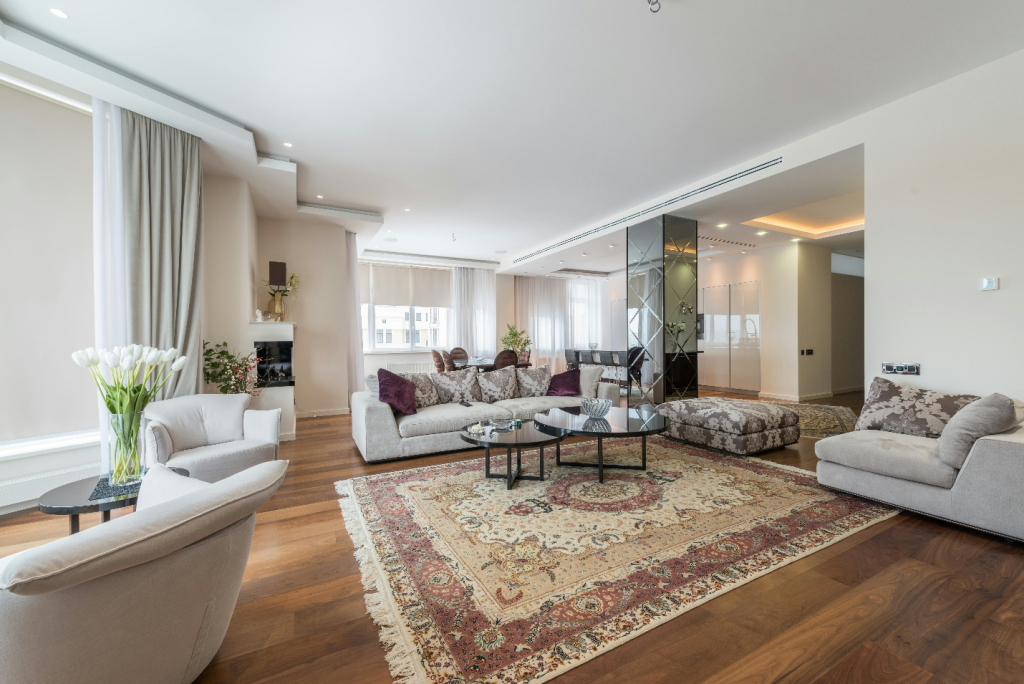When was the last time you really looked at the floor beneath your feet? Probably not recently. Yet, flooring is one of the most essential—and overlooked—elements of human civilization. From the smooth stone slabs of ancient Egyptian temples to the plush carpets of Victorian homes and the sleek engineered wood of modern apartments, flooring has silently shaped the way we live, work, and express ourselves.
Think about it: the floors in our homes and public spaces do more than just support us. They reflect cultural shifts, technological advancements, and even economic trends. This journey through the history of flooring isn’t just about materials; it’s about people. It’s about how each era’s innovations and challenges influenced what we walked on, from the packed earth floors of early human dwellings to the smart, self-heating floors of the future. Let’s take a step back in time and explore the history of flooring—one era at a time.
Ancient Flooring: The Foundations of Civilization
Prehistoric and Early Civilizations
The earliest humans didn’t have the luxury of choosing between hardwood, tile, or vinyl. Their “flooring” was simply the ground itself—packed earth, sand, or clay, depending on the region. But even in these primitive settings, early humans found ways to improve comfort. Some cultures layered straw, dried grass, or animal skins on the ground to provide insulation from cold or damp conditions.
By the Neolithic period (around 10,000 BCE), as humans transitioned from nomadic lifestyles to settled communities, flooring evolved too. Archaeological evidence from sites like Çatalhöyük in modern-day Turkey, one of the world’s earliest known cities, shows that people coated their floors with burnished clay and lime plaster. This not only made the surface smoother but also more durable and easier to clean.
Egypt: The Birthplace of Stone Flooring
The ancient Egyptians, known for their grand architectural achievements, took flooring to a new level—literally. While the average home still had packed earth floors, wealthier Egyptians walked on polished limestone, alabaster, or sandstone slabs. Temples and palaces featured these stone floors, often decorated with painted or carved hieroglyphics depicting gods, pharaohs, and daily life.
One of the most striking examples of Egyptian flooring comes from the Temple of Karnak, where massive stone tiles covered the temple grounds, ensuring durability against centuries of wear. These floors weren’t just functional; they were designed to last for eternity, much like the monuments that sat upon them.
Greek and Roman Influence
If the Egyptians introduced stone flooring, the Greeks and Romans perfected it. The Greeks were among the first to use marble flooring extensively, particularly in temples and wealthy homes. However, one of their most remarkable contributions was pebble mosaic flooring—a precursor to the more refined Roman mosaics. These floors, made by embedding naturally colored pebbles into wet cement, featured geometric patterns and even detailed mythological scenes.
The Romans took flooring artistry to an entirely new level. Their opus tessellatum technique—intricate mosaics made from tiny, precisely cut stone or glass tiles—adorned public baths, villas, and even roads. Perhaps the best-preserved examples of this can be found in Pompeii and Herculaneum, where volcanic ash preserved stunning mosaic floors dating back over 2,000 years.
The Medieval Era: Function Over Aesthetics
The Common Man’s Choice
For most people in medieval Europe, flooring was a humble affair. Peasants and villagers typically had dirt floors, sometimes covered with rushes (dried reeds), straw, or hay to create a softer, insulated surface. These materials were often changed seasonally, but they weren’t exactly the most hygienic. Food scraps spilled drinks, and even pests often found their way into the rushes, leading to unsanitary living conditions.
As carpentry skills improved, wealthier townspeople and merchants began to install rough-hewn wooden plank floors in their homes. Unlike today’s smooth hardwood flooring, medieval wooden floors were uneven, unfinished, and prone to gaps—but they provided an essential layer of protection against cold and dampness.
Castle Flooring: Durability for the Elit
Medieval castles were built for defense, not comfort, and their flooring reflected this. The most common flooring material inside castles was large, uneven stone slabs that could withstand centuries of wear. While these stone floors were highly durable, they were also cold, hard, and unforgiving—especially in harsh winters. Nobles and royals often covered these stone floors with elaborate wool or animal-skin rugs for warmth and decoration.
In wealthier castles and manor houses, timber plank floors were used on upper levels, while grand halls sometimes featured ornate tilework. Castles in France and England, for example, began using encaustic tiles—handmade, multi-colored tiles featuring intricate patterns. Some of these tiles, still visible in historic sites like Westminster Abbey, showcased religious symbols or family crests, turning flooring into a form of storytelling.
Tiled Floors in Churches & Monasteries
While castles prioritized strength, churches and monasteries introduced some of the most refined flooring of the era. Gothic cathedrals across Europe, such as Notre Dame in Paris and Canterbury Cathedral in England, used elaborate patterned tiles and marble inlays to create a sense of grandeur. These floors weren’t just for beauty; they symbolized the church’s wealth and influence over medieval society.
Monasteries, on the other hand, often used simple terracotta or clay tiles, which were easier to produce and maintain. These tiles, with their earthy red and brown hues, are still a signature of medieval flooring in historic religious buildings.
The Renaissance & Baroque Eras: Artistry and Craftsmanship
The Rise of Intricate Wood Flooring
One of the most significant advancements of this era was the introduction of parquet flooring—a technique that arranged small wooden planks in geometric patterns like herringbone, chevron, and intricate diamonds. This innovation became popular in 16th-century France, particularly in the Palace of Versailles, where King Louis XIV showcased ornate, handcrafted wooden floors that reflected the grandeur of his reign.
Before parquet, wooden floors were mostly wide, rough-hewn planks that were simply laid down and nailed in place. However, Renaissance craftsmen elevated wood flooring into an art form. Fine oak, walnut, and cherry wood were cut into delicate shapes, carefully fitted together, and polished to create a smooth, luxurious surface. These floors weren’t just for the elite; even upper-middle-class homes began adopting parquet designs as a symbol of status.
Marble & Stone
While wood gained popularity, marble, and decorative stone flooring remained a hallmark of wealth, especially in palaces and cathedrals. Inspired by Roman and Greek architecture, Renaissance designers revived the use of marble inlays and mosaic patterns, often combining black-and-white tiles in dramatic checkerboard designs. This style can still be seen in historic landmarks like the Doge’s Palace in Venice and St. Peter’s Basilica in Vatican City.
The Baroque period took marble flooring a step further, embracing lavish, multi-colored stone inlays that created bold, sweeping designs. Florence, Rome, and Paris became hubs for marble craftsmanship, producing breathtaking floors that featured floral patterns, mythological scenes, and religious iconography. The grander the floor, the more power and influence it signified.
The Influence of Persian & Oriental Carpets
Another key flooring trend during this period wasn’t just what was beneath the feet but what was on top of it. Persian and Oriental carpets, once exclusive to Middle Eastern royalty, became highly sought-after by European nobility. These luxurious, handwoven rugs were intricately designed with deep reds, blues, and gold, often featuring floral motifs and detailed borders.
Owning an imported Persian rug became a symbol of refined taste, and aristocrats across England, France, and Italy displayed them not only on floors but even as wall hangings and table coverings. This trend, which began in the Renaissance, continued through the Baroque period and into modern times, shaping the Western appreciation for fine carpets.
The Industrial Revolution: Flooring for the Masses
Wood Flooring
Before the Industrial Revolution, wood floors were cut and installed by hand, making them expensive and time-consuming to produce. But as steam-powered sawmills and machinery advanced, manufacturers could now mass-produce wooden planks with precision. This meant that middle-class homes could finally afford well-finished wood floors, something previously seen only in wealthier households.
During this period, tongue-and-groove flooring was invented—a revolutionary method where wooden planks interlocked, creating a seamless, more durable floor. This innovation eliminated the gaps, drafts, and creaking that were common in older wooden floors. Wood was no longer just a luxury—it became a household staple.
The Rise of Factory-Made Tile Flooring
While wood-dominated homes, tile flooring surged in popularity, especially in urban areas. Factories could now mass-produce ceramic, encaustic, and even porcelain tiles, making decorative floors more affordable. This led to beautiful, patterned tile floors in homes, public buildings, and train stations.
One of the biggest innovations of the time was Victorian encaustic tiles, which became a trend across Europe and America. These tiles, featuring bold geometric patterns and floral motifs, were commonly used in entryways, kitchens, and hallways. They were both stylish and practical—resistant to moisture and easy to clean.
Carpets & Rugs
Before the Industrial Revolution, carpets and rugs were handwoven and extremely expensive, often imported from Persia or Turkey. But thanks to mechanized weaving, carpets could now be produced in large quantities, making them affordable for middle-class families.
By the late 1800s, wall-to-wall carpeting began appearing in homes, offering warmth and comfort that bare wooden floors couldn’t provide. Factories like Axminster and Wilton became famous for their mass-produced, high-quality carpets that imitated traditional handwoven designs.
The 20th Century: Innovation and Convenience
Hardwood Flooring Solutions
At the beginning of the century, hardwood flooring remained the standard choice for homes. Solid oak, maple, and pine planks were widely used, often finished with shellac or wax for a glossy appearance. By the 1920s and 1930s, the invention of engineered wood flooring made hardwood floors more affordable and structurally stable. Unlike traditional solid wood planks, engineered wood featured multiple layers of plywood with a hardwood veneer, reducing warping and expansion caused by humidity.
However, by the 1950s and 1960s, hardwood’s dominance began to fade as new, more affordable options like linoleum, vinyl, and wall-to-wall carpeting surged in popularity. Many homeowners covered their old wood floors with these newer materials, preferring the softness, warmth, and variety they offered.
The Rise of Vinyl
One of the most revolutionary flooring materials of the 20th century was vinyl—offering a cheap, durable, and low-maintenance alternative to traditional wood and tile. Vinyl flooring, introduced in the 1930s, took convenience to the next level. Unlike linoleum, vinyl was fully synthetic and made from PVC (polyvinyl chloride), which made it even more resilient and versatile.
By the 1950s and 1960s, colorful patterned vinyl became a staple in American homes. Diner-style black-and-white checkerboard floors, bright floral kitchen patterns, and sleek faux-wood finishes became all the rage. Even today, vinyl remains one of the most widely used flooring options worldwide.
The Comfort Revolution
Perhaps the biggest shift in 20th-century flooring trends was the boom of wall-to-wall carpeting. While carpets had been around for centuries, they were previously seen as a luxury due to the labor-intensive process of weaving. That changed in the 1950s when advancements in synthetic fibers—such as nylon, polyester, and acrylic—allowed for the mass production of affordable carpets. Suddenly, middle-class families could enjoy the soft, cozy feel of carpeting in their bedrooms and living rooms.
By the 1970s, nearly every home had at least one room covered in plush carpet, and many featured bold, shaggy, brightly colored designs—a hallmark of the disco era. However, by the late 20th century, people began to realize the downsides of carpeting—stains, allergens, and wear and tear—leading to a resurgence of hard flooring options in the 21st century.
Professional Partner for Flooring Solutions
As we’ve journeyed through the rich history of flooring, it’s clear that the right choice can transform a space, reflecting both personal style and practical needs. At Floorcraft, we understand the importance of selecting the perfect flooring to complement your home or business. We specialize in a range of flooring services in Northern Virginia tailored to meet your unique requirements. From hardwood flooring installation and vinyl plank flooring solutions to carpet replacement services, we offer it all.
Contact Floorcraft today to schedule a consultation!



